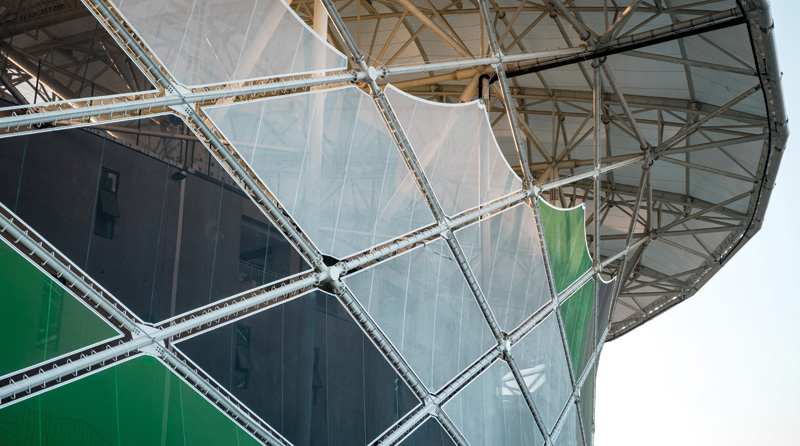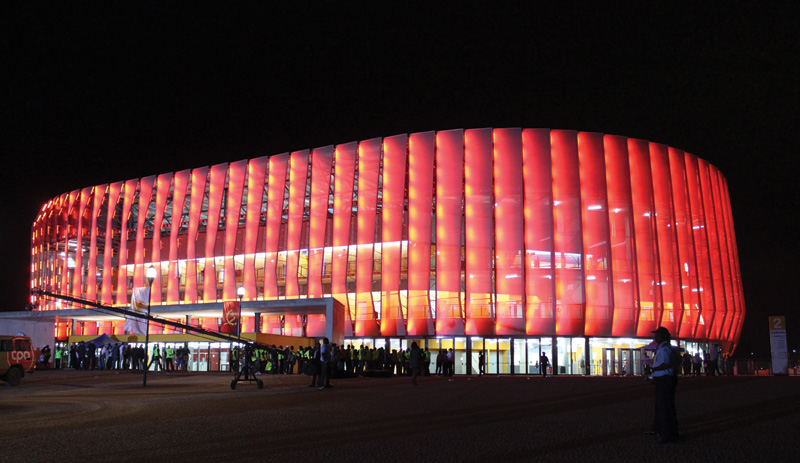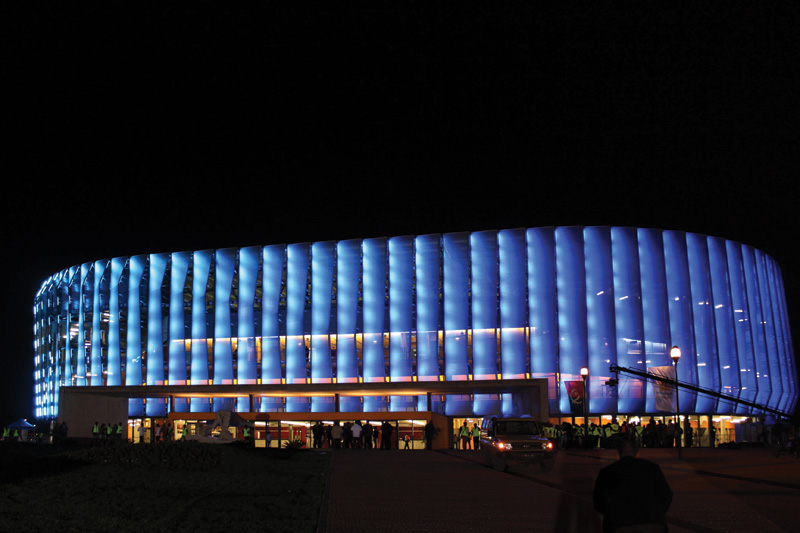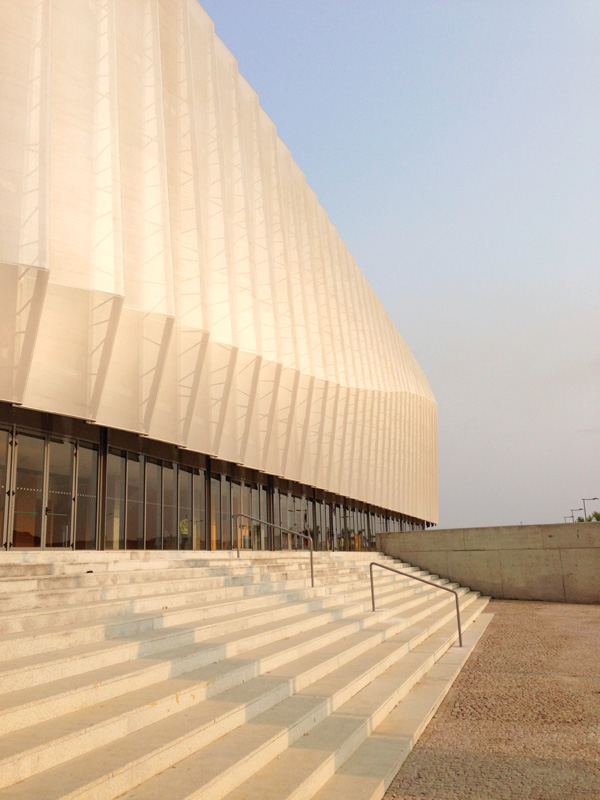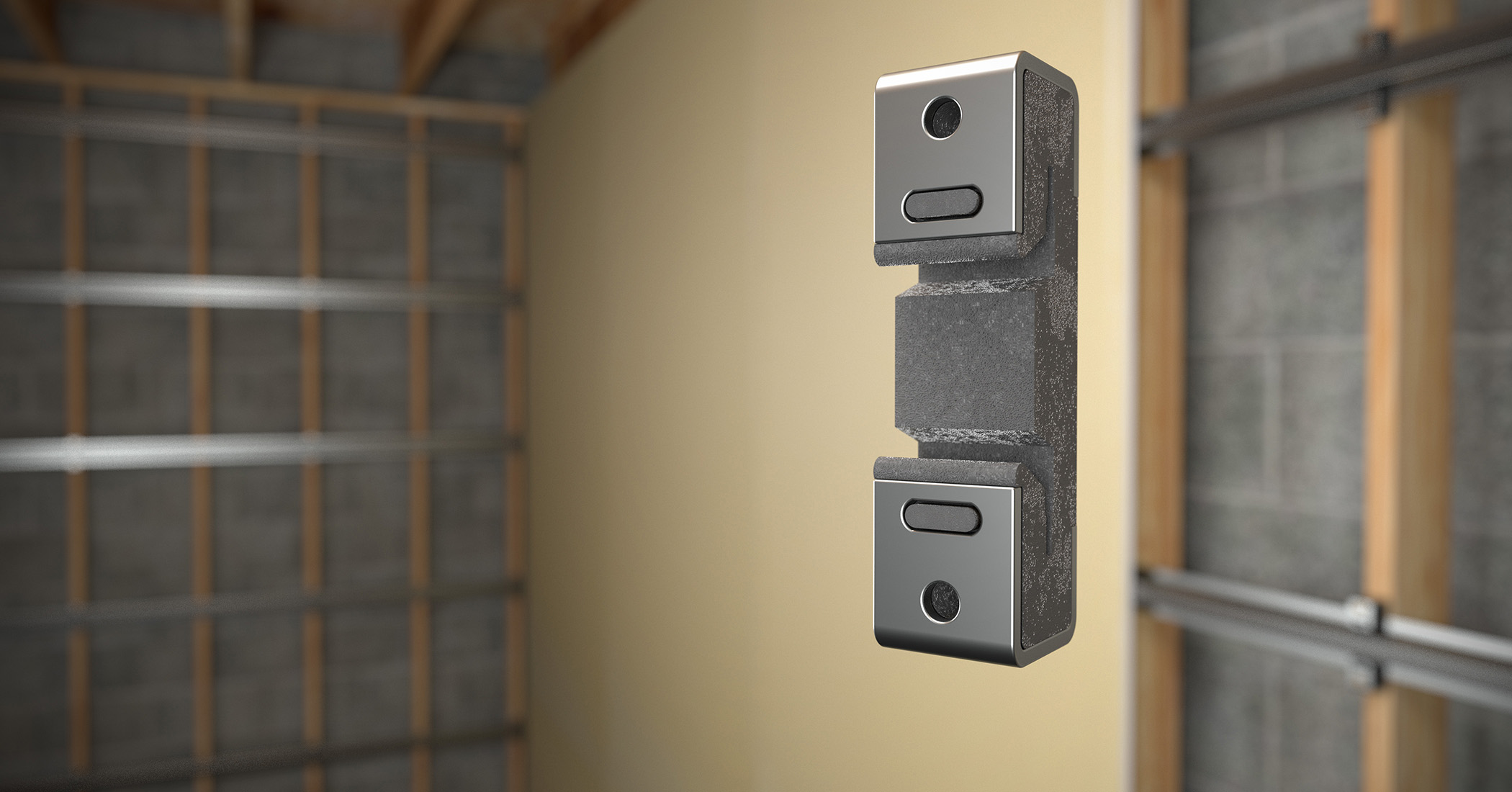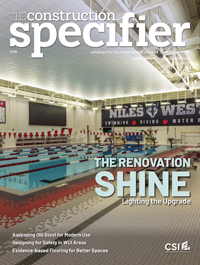Modular textile lightweight construction: The future of resilient and sustainable stadiums
By David Peragallo, assoc. AIA
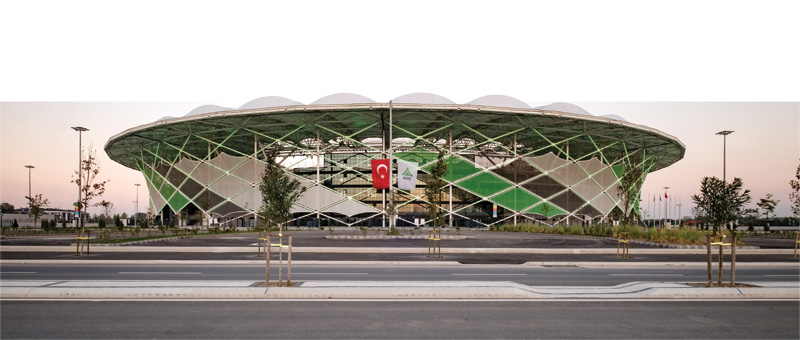
As the world grapples with the increasingly extreme impacts of climate change, architects and builders continue to prioritize materials and building techniques that help manage the effects of wind, rain, flooding, and fires. This is especially true for athletic stadiums and sporting venues, which require extensive funding and labor to design and construct, thus they must endure and serve the needs of owners and visitors. As stadiums evolve into multi-purpose, fan-centric destinations, the demand for innovative materials that enhance durability, weather resistance, and energy efficiency has never been greater. These cultural hubs for regional teams and community use must be built to resist harmful weather conditions for years to come.
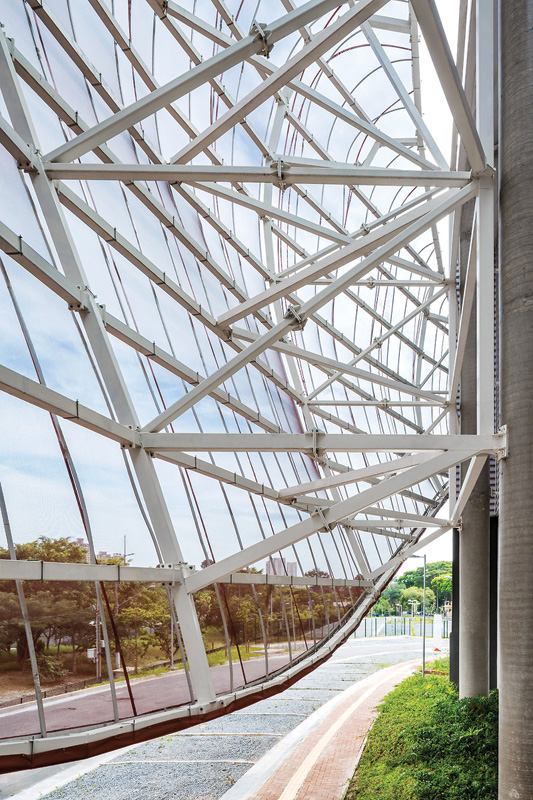
Due to their magnitude and capability to host thousands of guests, today’s stadiums in North America have become more than just destinations for sports fans. Considering the changing landscape of the entertainment industry, with technologies such as virtual reality and new venues such as the Sphere in Las Vegas, venue owners and managers have looked to repurpose their properties whenever possible. Hosting top-selling bands and artists and expanding the stadium’s use for more than one team has increased their overall revenue and helped keep visitors in seats year-round with four-season sports programming and various entertainment.
One solution that experts in this industry have explored as a new option to address these concerns is the use of modular textile construction materials—lightweight but durable alternatives to traditional architectural frameworks. These lightweight solutions are typically installed over a metal or aluminum frame, where the mesh is tensioned and securely fixed to the profiles, ensuring long-term stability without re-tensioning. This type of composite membrane delivers very high mechanical resistance to sustain even the most extreme weather conditions. These materials are expertly engineered to withstand extreme weather conditions, from the intense UV exposure and high temperatures of the southern U.S. to the heavy snow loads and harsh winters of the northern U.S. and Canada. The exceptional durability and resilience make them a reliable choice for even the most demanding climates.
An efficient solution for long-term results
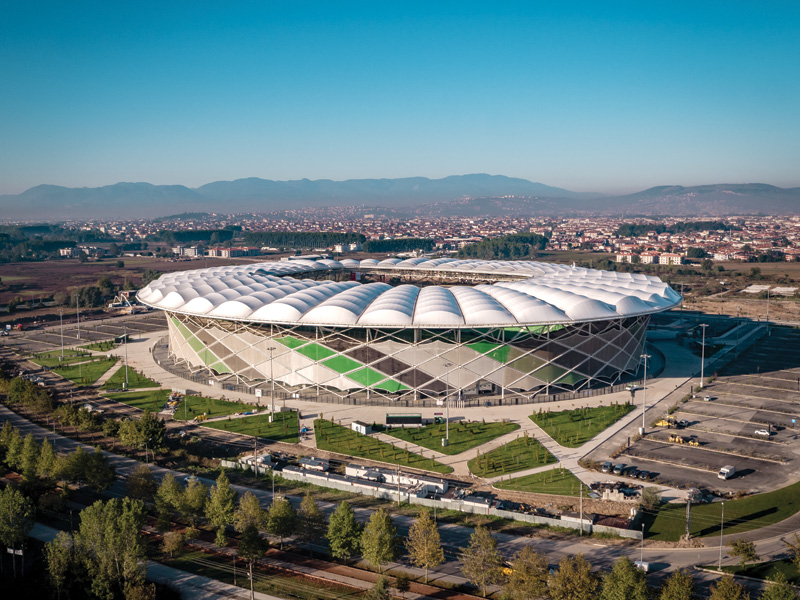
High-performance modular textile construction materials are developed with technology that ensure long-term durability against wind, rain, sand, and sun, resulting in a facade that can be installed anywhere from the desert to
the rainforest.
High-performance textile membranes used in modular construction often consist of a polyester base fabric coated with polyvinyl chloride (PVC) or glass fiber fabrics coated with polytetrafluoroethylene (PTFE). These materials offer an ideal balance of strength, flexibility, and resistance to UV degradation. PTFE-coated fiberglass, in particular, is prized for its exceptional fire resistance, durability, and long service life. Meanwhile, advancements in PVC formulations now include phthalate-free plasticizers and fluorine-free coatings, reducing environmental impact. These chemical innovations not only support compliance
with stringent fire safety codes but also enhance thermal comfort and contribute to lower lifecycle emissions.
High-performance modular textile construction materials are frequently specified for cultural and historical landmarks, where they help preserve building exteriors against unpredictable and often harsh regional weather conditions. Over time, a structure’s color will remain intact and will show minimal wear and tear from seasonal weather events, resulting in less overall maintenance and even fewer situations where replacement is required. This is especially important for stadiums where constant programming is scheduled, and shutting down the venue for repairs is often inconvenient. If repairs or replacements are needed, the structure remains intact while only the fabric is replaced. This enables a swift resolution for maintenance, color updates, or design changes. By preserving the main structure and allowing for seamless fabric replacement, these solutions offer significant cost savings for future modifications.
Modular textile construction materials have become crucial for safeguarding stadiums against extreme weather, which is becoming increasingly frequent and intense throughout the U.S. During the Los Angeles wildfires, NFL games had to be relocated or rescheduled to protect players and fans from exposure to smoke and ash. Implementing modular textile construction materials that meet national and international fire standards is more important than ever. Ensuring these stadiums, if damaged, can be easily and quickly repaired will save millions of dollars in repair costs and prevent additional losses in revenue during maintenance.
One of the key benefits of modular textile construction systems is their ability to integrate form and function. While it is essential to balance aesthetics and functional requirements, a visually striking stadium should also meet the practical needs of the space it covers. Thoughtfully designed modular textile construction will complement the architectural context of their surroundings, considering how end-users will interact with the structure. Due to the flexibility of these high-performance textiles, they are an ideal solution for a variety of venues as they can be designed, installed, and customized to reflect the home team’s branding and include design elements that tie into the local culture.
Why modular textile construction?
Compared to traditional building materials such as steel and concrete, modular construction offers a more sustainable and reliable option that is, overall, less expensive to manufacture and install. When partnering with the right builder and installer, working with modular textile construction materials can significantly reduce timelines and costs. Concrete, metal, and aluminum are particularly detrimental to the environment due to the amount of CO2 released during their creation. Modular textile construction materials can be sourced and produced using less overall energy and are lighter to transport and install, making them safer and easier to work with.
One of the most significant benefits of modular textile construction materials relates to the installation process. Once delivered, they are easy to maneuver and can be adjusted, offering more flexibility in design, future alterations, or dismantling for reuse or recycling. With the right partners, stadium architects and builders can be sure that their modular textile construction system will fit their needs and can be reworked as those needs change over time.
Boosting energy savings and daylight autonomy
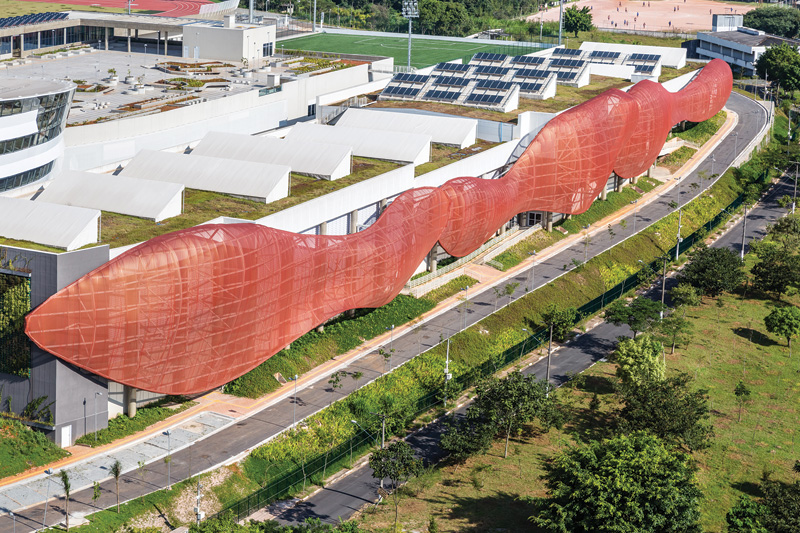
As a result of exceptional heat and light regulation, stadiums that implement these high-performance architectural membranes experience higher energy savings than those built with traditional construction materials.
A 2018 study concluded that compared to only one glass facade and an opaque roof, an additional translucent and thermally insulated membrane roof increased the continuous daylight autonomy from 15 to 38 percent.1 This resulted in a 30 percent reduction in the electricity needed for artificial lighting in the roof-covered area of the sports field used in this study. These results created a benchmark for planners, investors, and future buildings of this type as they showed the direct impact these materials have on the energy usage of these textile structures.
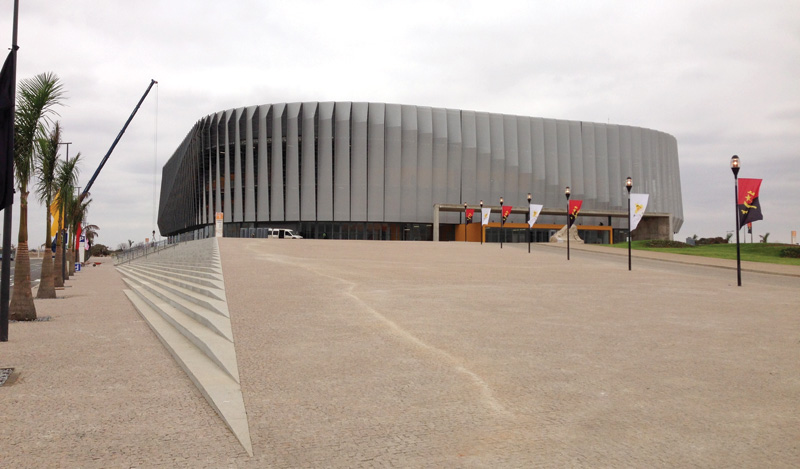
Enhancing temperature control in outdoor arenas
Thermal and light regulation is also a priority for outdoor arenas, especially in warmer climates where events occur during heat, humidity, and sun. To protect players and spectators, modular textile construction materials can take shape as durable, structural, and lightweight textile roofs. With the correct balance of light needed to illuminate sporting events and concerts that will protect players or attendees, these structures offer the best possible protection from the sun, wind, and cold during winter. The breathability of the membranes also offers optimal ventilation, with air being able to pass through to regulate the temperature of outdoor arenas in an energy-efficient manner.
Traditional building materials, such as steel, conduct heat and can raise the overall temperature within the structure, resulting in more energy use and an unpleasant experience for visitors. Tensile architecture promotes better airflow, keeping temperatures within the stadium lower and more comfortable, especially in hot climates. These passive cooling systems reduce the need for mechanical ventilation or air conditioning, creating a more pleasant environment for fans without overwhelming energy use.
Stadiums as landmarks with custom elements
Modular textile construction solutions help ensure venues remain visually striking and structurally resilient while prioritizing an improved spectator experience and enhanced environmental performance.
Stadiums are also viewed as landmarks that reflect the history and people of the region. The range of design capabilities that modular textile construction provides allows operators and owners to dress these venues in colors, patterns, and shapes that evoke and tie into local themes. These customized and unique options offer more ways to adhere to brand standards and be creative than a traditional roof or awning.
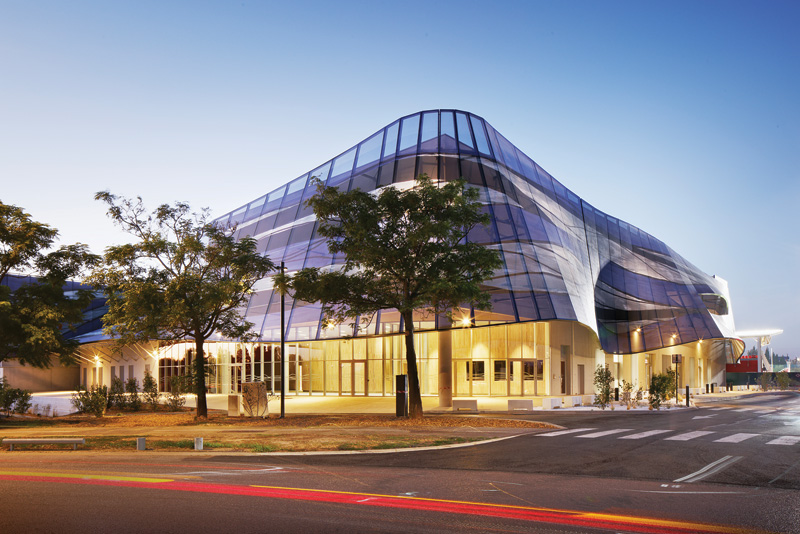
Enhancing visuals with less structure
In addition to modular, tensile architecture—a form of construction that uses tensioned membranes, cables, and lightweight structures to create large-span, flexible, and often visually striking architectural designs—also offers protection at stadiums. When used in tandem, these innovative solutions help enhance the spectator experience by providing ample shade and UV protection while improving the acoustics and sightlines throughout the venue.
They also use fewer supports and allow for larger spans of roof coverage without columns or beams, which provides spectators with unobstructed views of the field or stage, ensuring that more seats in the stadium offer premium visibility. With fewer visual barriers, spectators have a clearer line of sight to the action, improving the overall experience.
Conclusion
High-performance modular textile construction materials are developed with technology that ensures long-term durability against wind, rain, sand, and sun, and can be installed anywhere, regardless of weather conditions. These textiles are increasingly sought after for today’s stadiums as they are an innovative and sustainable alternative to traditional building materials with their flexible, durable, and sustainable characteristics. They can be used for various applications and provide significant benefits in terms of energy efficiency, providing exceptional thermal regulation and light control that contribute to reducing energy consumption and lower operational costs. These materials’ long-term durability ensures venues can withstand extreme weather conditions, offering protection and longevity for iconic structures worldwide. As demand for energy-efficient and sustainable solutions continues to grow, modular textile construction will play an increasingly important role in shaping the future of modern stadium design.
Notes
1 Refer to the article by MDPI.
Author
David Peragallo, assoc. AIA, senior specification manager North America, Serge Ferrari Group, has created, organized, and led the implementation of projects for high-performance architectural textiles throughout his career. Before joining Serge Ferrari Group in 2021, he served as specification and regional sales manager for Verseidag-Indutex GmbH, a German-based supplier of architectural textiles.
Key Takeaways
Modular textile construction offers durable, lightweight, and weather-resistant solutions for modern stadiums. These materials enhance energy efficiency, reduce maintenance, and support flexible, sustainable design. Ideal for extreme climates and multi-use venues, they improve spectator comfort, aesthetics, and functionality while lowering costs and environmental impact over a stadium’s lifespan.


